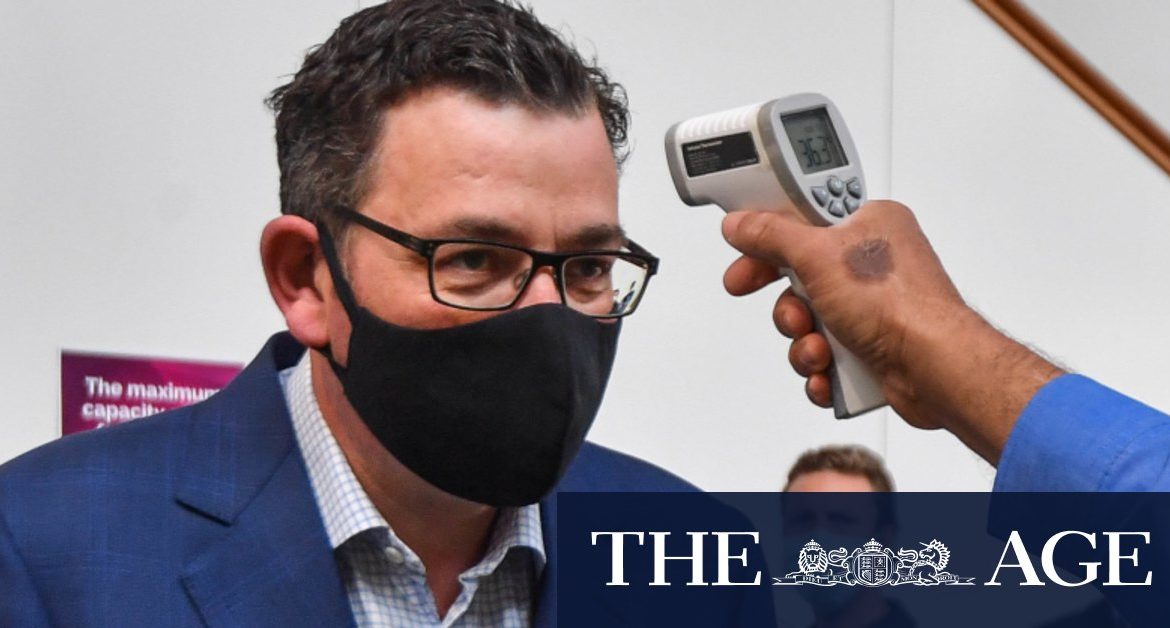“As case numbers have come down over the past few weeks, the DHHS… has created and tested, an algorithm that has identified some additional 515 historical cases that are connected to close contacts, or establish outbreaks,” he said.
“And as a result of those connections now being drawn the data has been updated.”
Deputy Chief Health Officer Allen Cheng said the algorithm allowed authorities to mine case data and was backed by manual reviews.
“It did take a bit of time to go back through all of these to make sure that that was correct. We obviously didn’t know the source than we do now,” he said.
“Obviously this is historical and this goes back to, mainly July and August but it’s important to correct the record so that we can analyse the data correctly, and make sure we have learnings for next time.”
Professor Cheng said the run on zero case days was “about as good as it can get”.
He said the total number of mystery cases had now fallen from about 4200 cases to 3700 cases.
Premier Daniel Andrews this week said he will not bring forward the next step of loosened restrictions, due on November 23, despite the state reaching the milestone of two weeks without a new infection being detected on Friday.
Government modelling had predicted Victoria wouldn’t reach this point until November 23, when the state will move to the next phase out of lockdown.
Professor Cheng said keeping the rules on mask-wearing in place would play into the decision on easing other restrictions.
“We’re going from a place where you know a lot of restrictions to hopefully a place where you know it’s over normal there’ll be some restrictions but there’ll be fairly minimal.
“What we’re trying to do is step through that cautiously and the order of that really depends on you know what’s easy to do, what restrictions can be relaxed that will be relatively high impact and improve people’s lives.
“Masks I think still are things where you know everyone’s got their maks now and people know what to do and by holding that back a little bit means that we can probably open up some of the other things earlier.
“The last step was six days ago so we want to make sure that when the time comes pretty soon, then we’ll be able to relax some of the other settings again.”
The full detail of changes will be announced next Sunday but Mr Andrews has previously said 10 people will be allowed to visit a home at a time and public gatherings will grow to 50 people outdoors.
Weddings and funerals would be allowed with 100 people or 10 in a private residence under the plan, and organised contact sports would resume for all ages with limitations on spectators.
In September, health experts expressed doubt that Victoria would hit the hard targets for reopening before Christmas.
Ten major employers have vowed to return at least 70 per cent of their workforces to CBD office towers as part of a push to reinvigorate the ailing city centre, as traffic data shows road congestion across Melbourne has returned almost to normal.
Pedestrian traffic and public transport use have also risen in the fortnight since lockdown ended.
While new data shows road use and congestion at 89 per cent of pre-COVID levels, public transport patronage is at just 30 per cent of normal, suggesting a lack of trust in trains, trams and buses.
Major organisations including NAB, ANZ, Metro Trains, PwC and Telstra have signed up to a City of Melbourne “CEO pledge”, vowing that as soon as public health restrictions are relaxed, they will bring at least 70 per cent of their workforce back to the CBD.
Rachel is a city reporter for The Age.
Most Viewed in National
Loading







